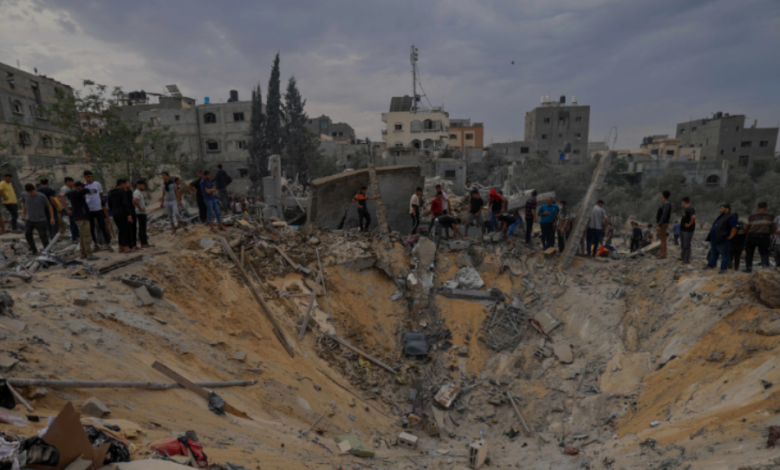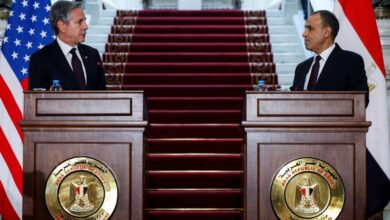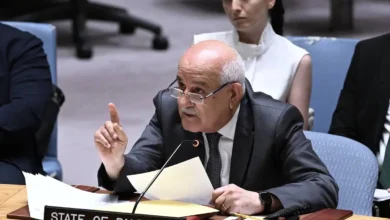The Role of Regional Powers in the Palestine-Israel Conflict

The Hamas horror attacks on October 7 were an attack on the consciousness of Israel. Over 1,200 Israelis were killed, thousands were injured, and more than 240 hostages were taken into Gaza. Now, in the eighth week since the attacks, results were being delivered from Israel’s ground offensive into Gaza. Israeli forces have dramatically lessened the onslaught of rockets and missiles that Hamas has fired into Israel.
The Israeli ground forces have flattened the Hamas tunnel network and subterranean military infrastructure in northern Gaza. The Israeli military operation has also displaced more than half of Gaza’s 2.2 million people, with reports covering more than 14,000 killed and 30,000 injured.
The regional military push of Israel was reflected in several high-profile diplomatic events organized by regional leaders over the past weeks. This regional statecraft has been directed at four parallel and interacting goals: pressuring Israel to adhere to a ceasefire, permanent and temporary; distribution of humanitarian aid for Gaza; release of the Israeli hostages kept in Gaza; and post-war governance planning for Gaza. In practice, these aims have been pursued using both diplomacy and force.
On October 7, after the fighting had continued for a week, Mohammed Deif called on the Iranian-led “Islamic resistance” to come to Hamas’s aid in the battle against Israel. On November 5, it was reportedly a pledge from the supreme leader of Iran, Ali Khamenei, to Hamas head Ismail Haniyeh that Iran would not intervene in the war. These have been followed nearly daily by attacks on Israel and U.S. forces in Iraq and Syria, mainly by Hizballah but also the Houthis in Yemen and even the Iranian-backed Shi’i militias in Iraq, since October 7, 2019.
Yet these escalating attacks have not yet satisfied Hamas. The previous day, the commander of the Iranian Revolutionary Guards Quds Force (IRGC-QF), Esmail Qaani, released a letter he had written to Hamas’s Mohammed Deif, in which he declared Iran stood ready to do “whatever it took” to check Israel’s goals in Gaza. The mixed messages coming from Tehran, as well as Hezbollah in Beirut, raise the question of how far Iran and its partners are willing to go to protect Hamas. Iran’s Compulsion
Since October 7, Iran and its partners, principally but not only Hizballah, have sought to limit the scale of Israel’s military operation against Hamas through verbal warnings (indistinguishable from veiled threats) and steady, low-level attacks on Israel’s borders.
Such attempts to force Israeli restraint have also involved around 90 attacks on forces of the United States within Iraq and Syria. In addition, Iran is seeking to move the United States to believe that it can make Israel show restrained sobriety by continuing to bomb it. What Iran would instead do is avoid the destruction of Hamas, ensuring it does not lose or severely limit Hezbollah in Lebanon and Syria. This is one of three war objectives that Israel has announced, including destroying Hamas’s military infrastructure and leadership in Gaza and returning the hostages. As Israeli forces have successfully advanced into northern Gaza in the past three weeks, the pace and intensity of cross-border attacks on Israel’s northern and southern borders has increased.
Hizballah (and, by extension, Iran) is using regular but low-level commando military activity and the threat of an escalation to encourage Israel to back off its efforts to eliminate Hamas. The Houthis in Yemen have also targeted Israel by launching drones, as well as cruise and ballistic missiles, on southern Israel from over 1,000 km. Iran’s Foreign Minister, Hossein Amir-Abdollahian, apparently sent a message to Israel through the United Nations Mideast envoy, Tor Wennesland, in a meeting in Beirut on October 14.
Amir-Abdollahian said the Islamic Republic does not want a regional war and will offer its assistance in letting the civilian hostages, of course in Gaza, go. Yet Amir-Abdollahian also said that Iran had red lines, that an extended Israeli military operation and ground invasion into Gaza would prompt an Iranian response. Two days later, after returning to Iran, Amir-Abdollahian said if Israeli “war crimes against Palestinians continue,” the “axis of resistance” would open “multiple fronts” against Israel.
Days later, on October 22, Amir-Abdollahian, in his bluntest warning yet, told AFP that the region could lose control—”anything is possible at any moment and the area will go out of control. In a speech delivered before the United Nations General Assembly in New York on October 28, Amir-Abdollahian addressed the U.S., saying Iran would not spare the country if the Israeli operation in Gaza continued. On October 30, the Israeli government approved a limited ground invasion into northern Gaza. In the intervening five weeks, Hezbollah forces have launched over 165 low-level attacks on north-Israeli border defenses and communities.
From October 16 through October 22, 42 northern Israeli communities, including the city of Kiryat Shmona, population over 20,000, were evacuated. In response, Israel has carried out hundreds of pre-emptive and retaliatory attacks against Hizballah’s Radwan commando units within Lebanon. Yet in the past three weeks or so, the geographic scope of strikes carried out by Hezbollah has grown dramatically from north of the border to strikes as far as Acre and Haifa, quite large Israeli cities.
On its part, Israel has ventured into a deeper part of Lebanon, launching drone attacks on Iranian-made surface-to-air missile launchers at Zahrani, located some 45 km from the border. In his Martyr’s Day speech on November 10, Hezbollah leader Hassan Nasrallah vowed that fighters would keep up the fight until Israel is destroyed. In response, Israeli Defense Minister Yoav Gallant threatened, “What we are doing in Gaza, we know how to do in Beirut.” As the rhetoric and fighting on the ground has ratcheted up, so has the risk of high-casualty miscalculation.
On November 9, a drone launched from Syrian territory targeted an elementary school in Eilat at the southern tip of Israel. Thirty-seven kindergarten students were in the building. The attack seriously hurt no one. On November 12, a Hizballah anti-tank missile struck an Israeli electric company truck, killing one civilian and seriously injuring several others. On November 23, Hizballah fired more than 80 Rocky in northern Israel.




